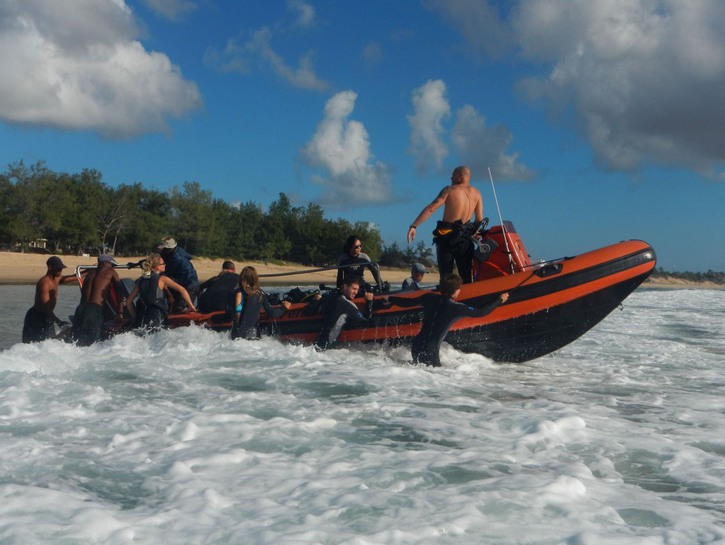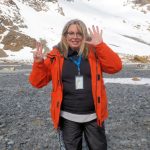
Tam Warner Minton
There is a growing belief that “voluntourism” can be harmful to the communities which it aims to serve. Individuals seeking to add volunteer positions to their resumes, those who just want cool photos for their social media, and travelers who are merely looking for a cheap vacation have certainly smeared the term “voluntourism.” Some who seek to improve a destination through their efforts are calling it “impact travel” to get away from negative associations with “voluntourism.”
Videos by TravelAwaits
And while there’s controversy around all these types of travel, I booked myself a trip to volunteer in Africa, and it changed my life. Unlike some voluntourism experiences, my trip was pure citizen science: It furthered the cause of science and changed my life at the same time. Not a bad combination!
Why I Decided To Try Volunteer Travel
Contemplation of a volunteer trip started when my youngest was entering his senior year of college. I knew at this turning point I could continue to be a special part of my children’s lives, but was no longer a manager — or even an influential mentor. Both my children would soon fly solo. It is not as if I wasn’t busy in my own life; I had been a university lecturer in social sciences and a college consultant in private practice who also spent a great deal of time volunteering at a local high school. However, I wanted something different, something more.

Tam Warner Minton
The different that I sought came when I saw the BBC Natural World episode “Andrea: Queen of Mantas.” The program followed the life and research of Dr. Andrea Marshall, the first person to earn a Ph.D. studying the elusive manta ray. Mantas have fascinated me ever since I saw them in Florida as a little girl. I watched and became more impressed by the minute by this young woman who’d gone to Mozambique alone and stumbled upon a resident population of manta rays.
Her discoveries, one of which was that each manta had a unique identifying pattern on its belly, led her to realize that two things were needed to continue her work: identification photographs and tags so she could try to understand why some mantas were resident in Mozambique while others migrated. My love of the ocean and animals excited my interest — Why couldn’t I do something like that?
Why I Chose Mozambique
As an avid diver, I wondered if there were programs that included scuba diving as part of scientific projects. I ran across a company called All Out Africa which had a project in Mozambique, in the same town where Dr. Marshall does her research. I started a discussion with a company representative, asking questions and getting detailed information about the location and work involved. I have four titanium rods and eight pedicle screws holding my lower spine together, so I would require a few considerations to participate, like not having to pick up my own scuba tank or carry gear a long distance.
The representative contacted the Mozambique team, and they said, No problem. I was so excited about the project and the possibility of meeting Dr. Marshall that I booked a trip to spend three weeks in the program. That’s right! Me! Traveling to volunteer in Africa — in Mozambique — with a fish I had always dreamed of diving with!

My family was a bit concerned. Maybe more than a bit. We are a dive family, so the diving was not as much a concern to them as the getting there. To say I’m an absentminded professor is a very apt description. I lose and misplace things constantly. Another habit they worried about is my tendency to fall. I become excited and distracted and have been known to trip or run into things. It’s the way I am, and I would gladly become an organized, focused person if I could. I decided on this trip, I would be that person. I had an opportunity to remake myself in the image I wanted to be: calm, utterly focused, knowing where everything was.
Here’s What Happened
In three short weeks, I was off — boarding my plane! I won’t bore you with the details, but I couldn’t keep track of anything. I had security guards running after me because I forgot something at security. That happened several times. I tripped in the airport. Okay, no harm done; I hadn’t met anyone yet.
After my flights on huge British Airways planes, I boarded a small Mozambique Air plane in Johannesburg for the flight to Inhambane, Mozambique. Okay, I thought. I wanted to do this, so I got on the tiny plane even though I was a little dismayed. We landed in what looked like a field, and I spotted a shack nearby, which turned out to be the airport. I met several of my fellow volunteers, and off we went in a van, squeezed tight and bouncing like crazy as the potholes were huge.

Tam Warner Minton
After arriving at the volunteer house, I still had a few shocks to the system coming. Our other volunteer mates were already there, and I shared a room with a young woman named Leslie. The house was clean enough, with mostly outdoor bathrooms and showers. We would wash our clothing in a sink outdoors and hang it on a line. From there, our guide took us on a tour.
Of course I was the oldest person in the group. Most of the others could have been my children. I had the impression there would be other 50-somethings, but nope, just me. The stairs to the beach from the volunteer house were up a hill, then down a long way, and featured concrete steps that were broken, steep, curvy, and completely dangerous. I learned that everyone called them the Stairs of Death. And that’s exactly what they felt like.

Tam Warner Minton
The beach was beautiful, and featured what’s known as singing sand. The sand “sings” because it has a certain amount of quartz in it, which causes it to produce a sound when it’s stepped on or the wind blows over it. The sand was also very deep. There was no way I could keep up with the younger, fitter volunteers. I felt panicky.
By the time we were back at the house, after climbing up the Stairs of Death, I knew I had made a very serious mistake. There was no way I could do this. I was even more convinced after my first dive trip. There is no marina in Tofo, Mozambique, just big, crashing waves. The zodiac (a rubber boat) had to be pushed out over the surf, then each person jumped in and we continued to get over the surf line. I couldn’t jump. They had to drag me over the side. Embarrassing.
I didn’t know some of their dive terminology. The water was rough, the visibility nothing like I was used to. We had to swim to the bottom as fast as possible so we could stay together. I ran out of air first, of course, which was also embarrassing. I also missed my safety stop because I was ashamed to tell the dive master that I was so low on air. That was stupid of me. There were no health facilities in the village.

Tam Warner Minton
The point being, of course, that I was totally unprepared, and sure that there was no way I could manage to the end of the trip. To make things even worse, it took everybody about a day to realize I was a consistently disorganized mess. So much for making an impression. But an amazing thing happened: I refused to quit, and three weeks later a stronger, slimmer, and more educated woman returned home.

Tam Warner Minton
Yes, I did it. I filled out fish surveys, did the dives, did the ocean safaris, attended the seminars about marine life, walked the Stairs of Death at least twice a day, and came home to myself. The trip taught me who I really am, and showed me what I’m capable of. Without daily life, obligations, places to be, others to consider, I had moments of just being me. I’ve come to realize that few people experience those moments, and I had to find mine by going out of my comfort zone, getting away into a completely different environment, and working hard to be able to complete the work I went to do. By myself. Solo.
How Did It Change My Life?
My volunteer trip allowed me to realize how strong I am and how determined I can be. It gave me a thirst for more opportunities to challenge myself. It’s funny, but I’m still in touch with most of the volunteers who were on that expedition. I might be old enough to be their mother, but we bonded in an experience where passion and determination came together. I’ve seen many of them since, and had dinner with one of my housemates just last week in La Paz, Mexico, where he is finishing a Ph.D. in shark ecology.

Tam Warner Minton
Since Mozambique, I’ve participated in scientific expeditions in Thailand, Myanmar, Ecuador, Isla Mujeres, Raja Ampat, Komodo National Park, and Revillagigedos Archipelago, and I’m headed to the Coral Triangle next January for another expedition. Meeting Dr. Marshall in Tofo has led me to places I never thought I could go. But as I learned on my first volunteer trip, I can do anything.
Photo Credit: Tam Warner Minton
